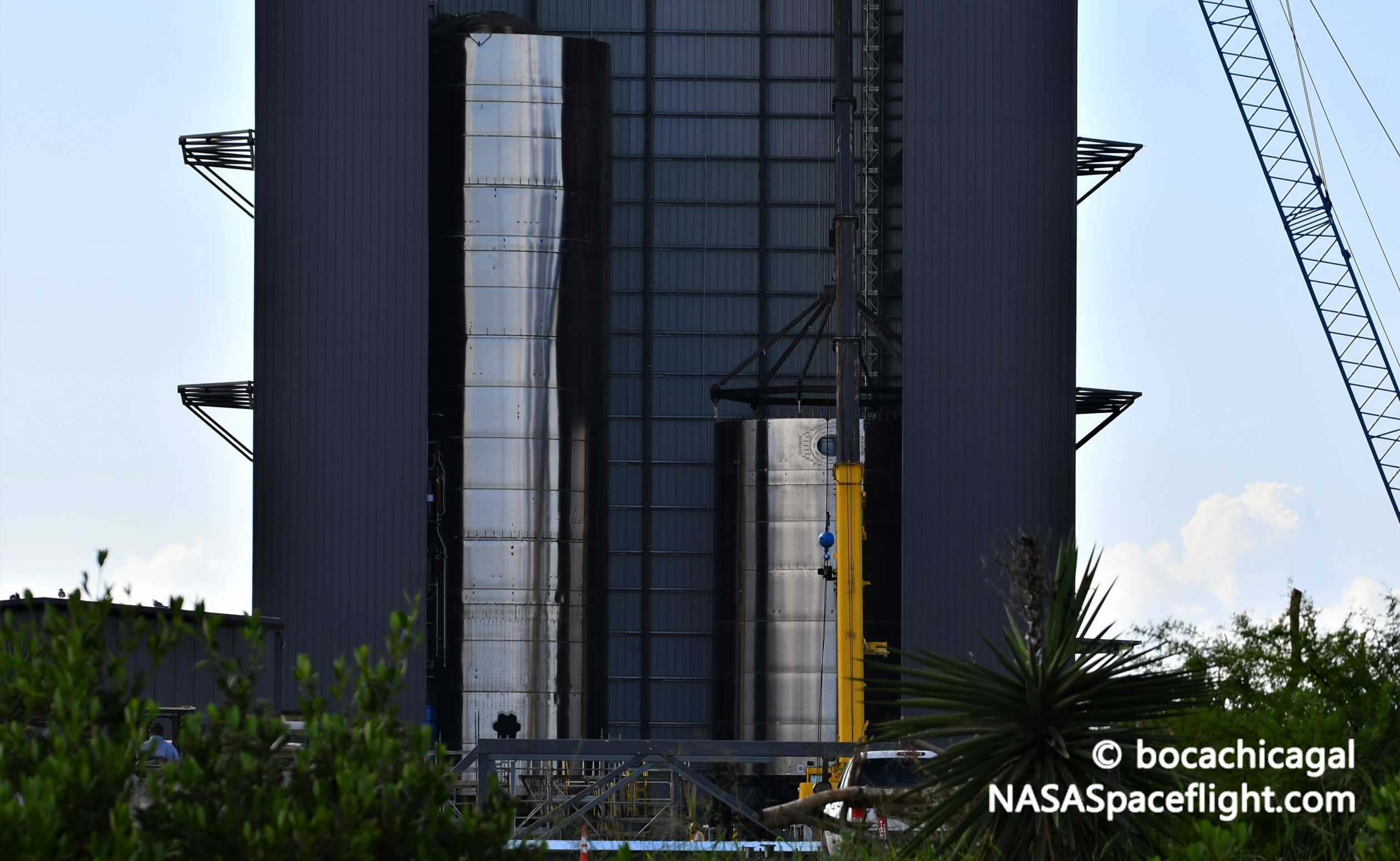
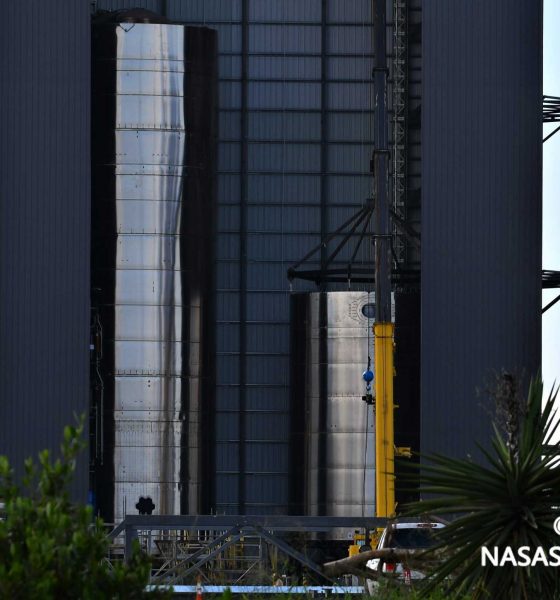
News
SpaceX’s next Starship starts to take shape as Elon Musk talks next steps
Less than a day after SpaceX successfully hopped a full-scale Starship prototype for the first time, the company has begun stacking the next rocket and Elon Musk is talking next steps.
Almost immediately after Starship SN5 took to the sky on a 150m (500 ft) hop debut, SpaceX CEO Elon Musk was talking about the company’s next near-term goals for the next-generation launch vehicle’s test program. To an extent, he had already offered a rough overview through various interviews and tweets over the last year or so. Aside from continuing to gradually refine Starship and Super Heavy designs and the processes used to manufacture and test those rockets, a few major proofs of concept stand between SpaceX and total confidence in the current architecture.
As far as basic rocketry goes, SpaceX’s 150m Starship hop has functionally proven that the company’s exotic, rule-of-thumb-breaking approach to Starship production and assembly can be feasibly refined into something capable of producing extraordinarily cheap orbital-class rockets. While a massive achievement, it doesn’t guarantee that the rockets produced will be reusable – let alone rapidly and easily reusable.
As of now, it can be safely stated that SpaceX has solved all major challenges involved in routinely and reliably landing and reusing orbital-class rocket boosters (first stages). It’s hard and surprises are always a possibility, but the landing records of Falcon 9 and Falcon Heavy boosters speak for themselves. For the colossal booster Starship needs to reach orbit, the Falcon family’s success means that Super Heavy recovery and reuse is more a question of “when” than “if”.
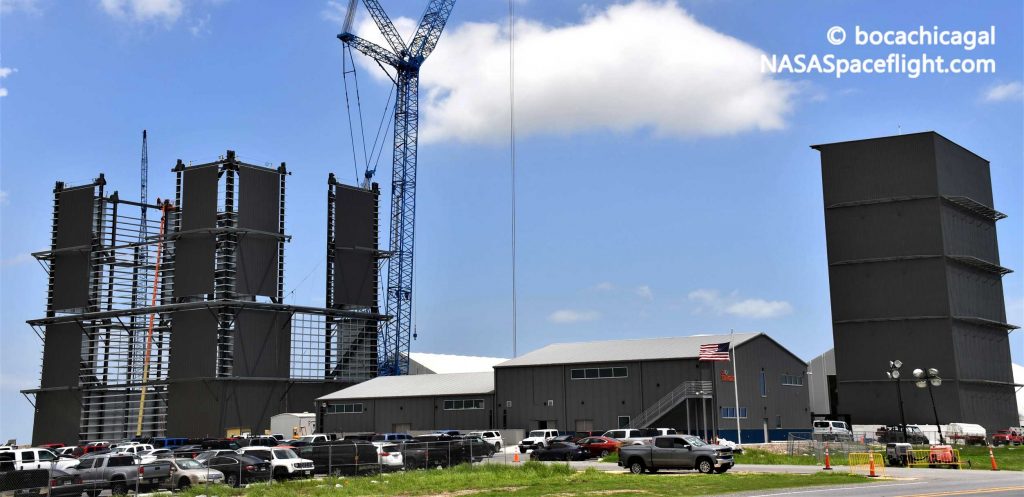
Starship, on the other hand, is going to offer many different challenges – some unprecedented for SpaceX and others unprecedented in the entire history of spaceflight. For Starship to be able to support a level of reuse compatible with what the Super Heavy booster is likely to achieve, SpaceX will have to create the biggest and most effortlessly reusable orbital-class spacecraft ever built.
Even heavier than NASA’s Space Shuttle orbiter, Starship will also rely almost entirely on the unproven technology of on-orbit cryogenic propellant transfer to reach beyond low Earth orbit (LEO). To survive orbital-velocity reentries while still being rapidly and cheaply reusable, Starship will further have to push the envelope of heat shield technologies. Last but certainly not least, in its current iteration, Starship relies on a truly unprecedented style of recovery to efficiently land back on Earth.
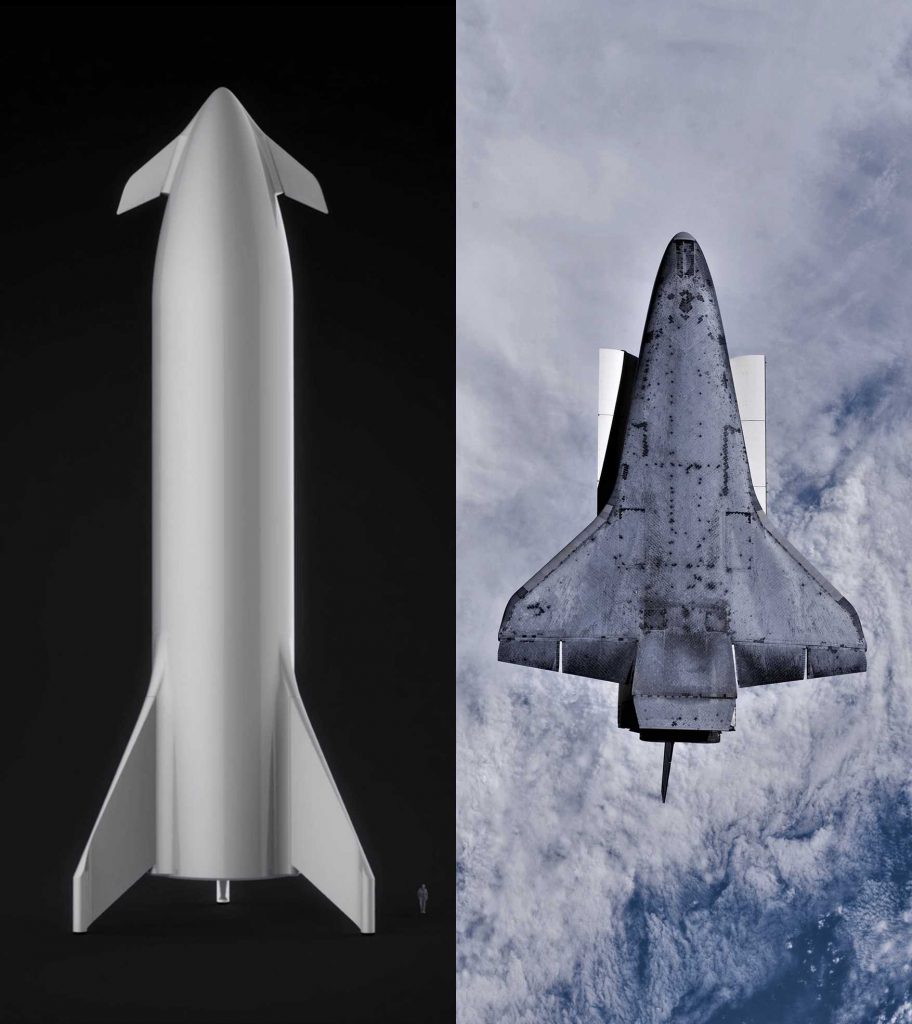

It’s this last bit where CEO Elon Musk’s recent comments and recent activity at SpaceX’s Starship factory come in. According to Musk, SpaceX intends to perform at least several more smaller hops (a la SN5) “to smooth out [the] launch process.” It’s unclear which prototype(s) will be involved in that series of hops but after SpaceX is satisfied with the state of launch operations, the plan is to “go high altitude with body flaps.” Based on past comments, it’s safe to assume that Musk is referring to a plan to launch a Starship to 20 km (~12 mi).
After reaching 20 km, Starship would orient itself belly down – a bit like a skydiver – and quite literally fall its way to ~1 km altitude before attempting an aggressive Raptor-powered pitch-over maneuver and last-second landing. By using Earth’s atmosphere much like a skydiver trying to slow down, Starship will theoretically be able to dramatically reduce the amount of propellant it needs to land.
That high-altitude launch and landing demonstration will also be the first time a Starship truly needs aerodynamic control surfaces (i.e. “body flaps”) to safely complete a flight test. According to NASASpaceflight.com info, Starship SN8 – also the first full-scale prototype to be built out of a different steel alloy – will be the first ship to receive functional flaps and a nosecone. If initial tests go according to plan, SN8 will also be the first ship to attempt a skydiver-style landing as described above. As far as full-scale aerodynamics goes, such a landing is loosely understood at best. For an orbital-class spacecraft, it’s even more of a wildcard.
Regardless, just hours after Starship SN5’s successful hop debut, SpaceX began stacking the first of several already finished Starship SN8 sections. Based on the assembly of past prototypes, the ship’s tank section could reach its full height just a few weeks from now, while subsequent nosecone and flap installations are uncharted territory.
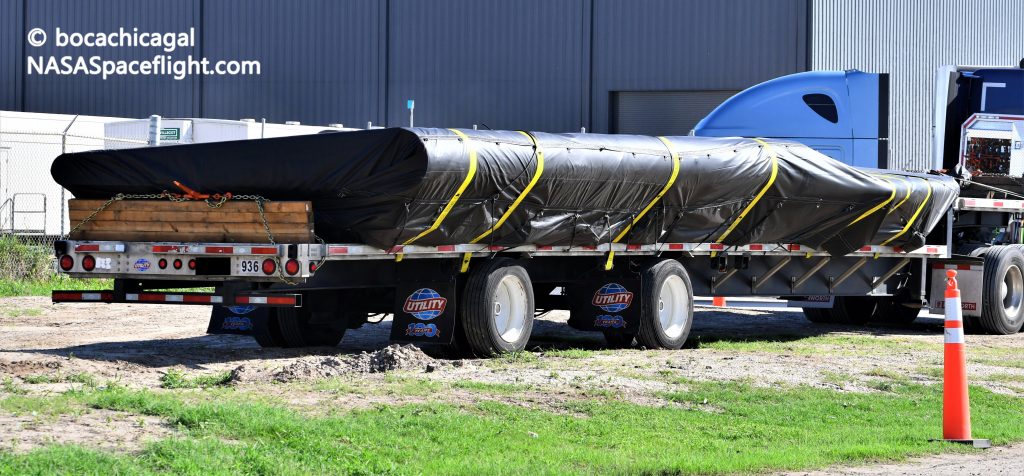

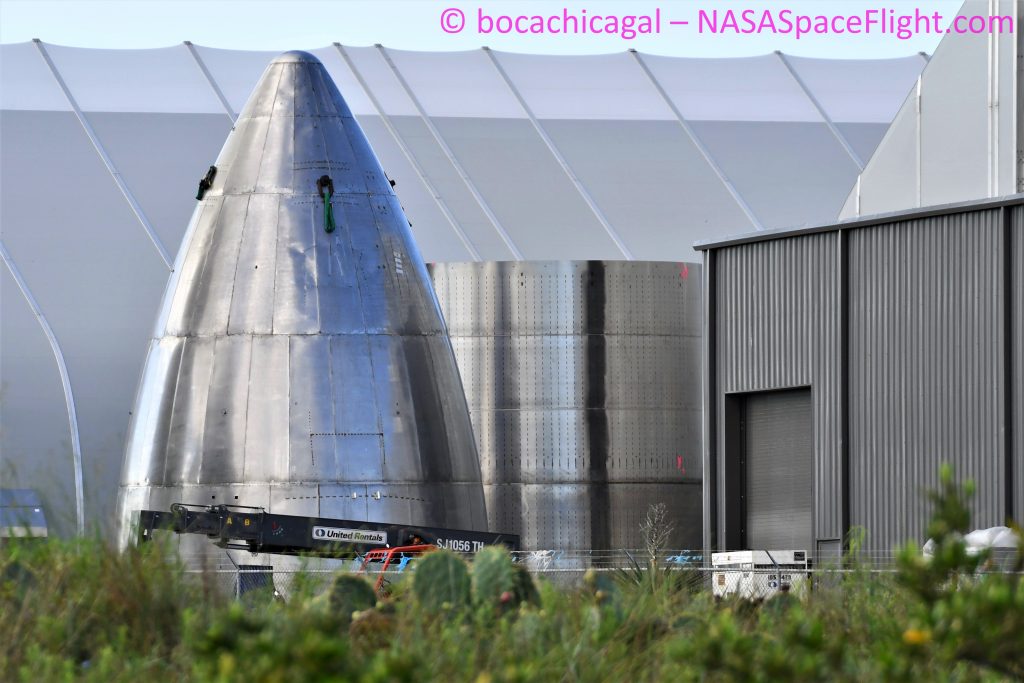

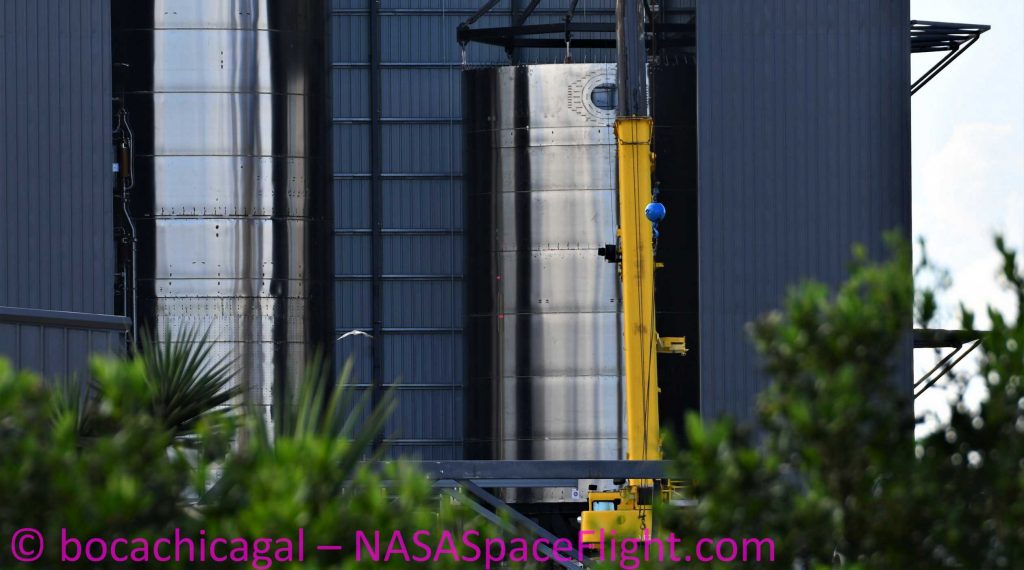
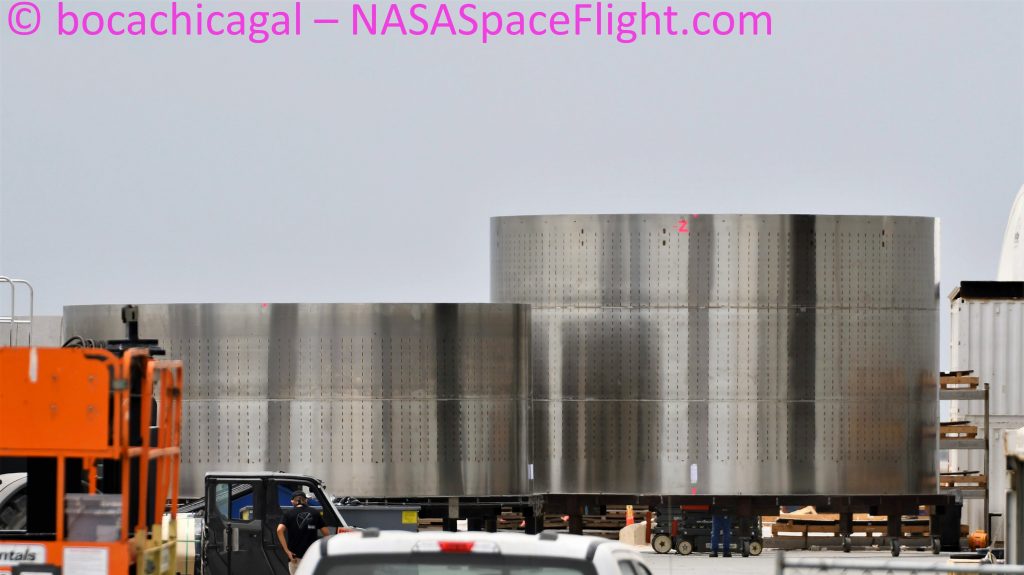
Check out Teslarati’s Marketplace! We offer Tesla accessories, including for the Tesla Cybertruck and Tesla Model 3.

Elon Musk
Elon Musk and Tesla AI Director share insights after empty driver seat Robotaxi rides
The executives’ unoccupied tests hint at the rapid progress of Tesla’s unsupervised Robotaxi efforts.

Tesla CEO Elon Musk and AI Director Ashok Elluswamy celebrated Christmas Eve by sharing personal experiences with Robotaxi vehicles that had no safety monitor or occupant in the driver’s seat. Musk described the system’s “perfect driving” around Austin, while Elluswamy posted video from the back seat, calling it “an amazing experience.”
The executives’ unoccupied tests hint at the rapid progress of Tesla’s unsupervised Robotaxi efforts.
Elon and Ashok’s firsthand Robotaxi insights
Prior to Musk and the Tesla AI Director’s posts, sightings of unmanned Teslas navigating public roads were widely shared on social media. One such vehicle was spotted in Austin, Texas, which Elon Musk acknowleged by stating that “Testing is underway with no occupants in the car.”
Based on his Christmas Eve post, Musk seemed to have tested an unmanned Tesla himself. “A Tesla with no safety monitor in the car and me sitting in the passenger seat took me all around Austin on Sunday with perfect driving,” Musk wrote in his post.
Elluswamy responded with a 2-minute video showing himself in the rear of an unmanned Tesla. The video featured the vehicle’s empty front seats, as well as its smooth handling through real-world traffic. He captioned his video with the words, “It’s an amazing experience!”
Towards Unsupervised operations
During an xAI Hackathon earlier this month, Elon Musk mentioned that Tesla owed be removing Safety Monitors from its Robotaxis in Austin in just three weeks. “Unsupervised is pretty much solved at this point. So there will be Tesla Robotaxis operating in Austin with no one in them. Not even anyone in the passenger seat in about three weeks,” he said. Musk echoed similar estimates at the 2025 Annual Shareholder Meeting and the Q3 2025 earnings call.
Considering the insights that were posted Musk and Elluswamy, it does appear that Tesla is working hard towards operating its Robotaxis with no safety monitors. This is quite impressive considering that the service was launched just earlier this year.
Elon Musk
Starlink passes 9 million active customers just weeks after hitting 8 million
The milestone highlights the accelerating growth of Starlink, which has now been adding over 20,000 new users per day.

SpaceX’s Starlink satellite internet service has continued its rapid global expansion, surpassing 9 million active customers just weeks after crossing the 8 million mark.
The milestone highlights the accelerating growth of Starlink, which has now been adding over 20,000 new users per day.
9 million customers
In a post on X, SpaceX stated that Starlink now serves over 9 million active users across 155 countries, territories, and markets. The company reached 8 million customers in early November, meaning it added roughly 1 million subscribers in under seven weeks, or about 21,275 new users on average per day.
“Starlink is connecting more than 9M active customers with high-speed internet across 155 countries, territories, and many other markets,” Starlink wrote in a post on its official X account. SpaceX President Gwynne Shotwell also celebrated the milestone on X. “A huge thank you to all of our customers and congrats to the Starlink team for such an incredible product,” she wrote.
That growth rate reflects both rising demand for broadband in underserved regions and Starlink’s expanding satellite constellation, which now includes more than 9,000 low-Earth-orbit satellites designed to deliver high-speed, low-latency internet worldwide.
Starlink’s momentum
Starlink’s momentum has been building up. SpaceX reported 4.6 million Starlink customers in December 2024, followed by 7 million by August 2025, and 8 million customers in November. Independent data also suggests Starlink usage is rising sharply, with Cloudflare reporting that global web traffic from Starlink users more than doubled in 2025, as noted in an Insider report.
Starlink’s momentum is increasingly tied to SpaceX’s broader financial outlook. Elon Musk has said the satellite network is “by far” the company’s largest revenue driver, and reports suggest SpaceX may be positioning itself for an initial public offering as soon as next year, with valuations estimated as high as $1.5 trillion. Musk has also suggested in the past that Starlink could have its own IPO in the future.
News
NVIDIA Director of Robotics: Tesla FSD v14 is the first AI to pass the “Physical Turing Test”
After testing FSD v14, Fan stated that his experience with FSD felt magical at first, but it soon started to feel like a routine.

NVIDIA Director of Robotics Jim Fan has praised Tesla’s Full Self-Driving (Supervised) v14 as the first AI to pass what he described as a “Physical Turing Test.”
After testing FSD v14, Fan stated that his experience with FSD felt magical at first, but it soon started to feel like a routine. And just like smartphones today, removing it now would “actively hurt.”
Jim Fan’s hands-on FSD v14 impressions
Fan, a leading researcher in embodied AI who is currently solving Physical AI at NVIDIA and spearheading the company’s Project GR00T initiative, noted that he actually was late to the Tesla game. He was, however, one of the first to try out FSD v14.
“I was very late to own a Tesla but among the earliest to try out FSD v14. It’s perhaps the first time I experience an AI that passes the Physical Turing Test: after a long day at work, you press a button, lay back, and couldn’t tell if a neural net or a human drove you home,” Fan wrote in a post on X.
Fan added: “Despite knowing exactly how robot learning works, I still find it magical watching the steering wheel turn by itself. First it feels surreal, next it becomes routine. Then, like the smartphone, taking it away actively hurts. This is how humanity gets rewired and glued to god-like technologies.”
The Physical Turing Test
The original Turing Test was conceived by Alan Turing in 1950, and it was aimed at determining if a machine could exhibit behavior that is equivalent to or indistinguishable from a human. By focusing on text-based conversations, the original Turing Test set a high bar for natural language processing and machine learning.
This test has been passed by today’s large language models. However, the capability to converse in a humanlike manner is a completely different challenge from performing real-world problem-solving or physical interactions. Thus, Fan introduced the Physical Turing Test, which challenges AI systems to demonstrate intelligence through physical actions.
Based on Fan’s comments, Tesla has demonstrated these intelligent physical actions with FSD v14. Elon Musk agreed with the NVIDIA executive, stating in a post on X that with FSD v14, “you can sense the sentience maturing.” Musk also praised Tesla AI, calling it the best “real-world AI” today.








